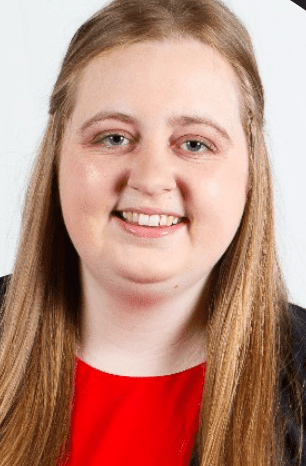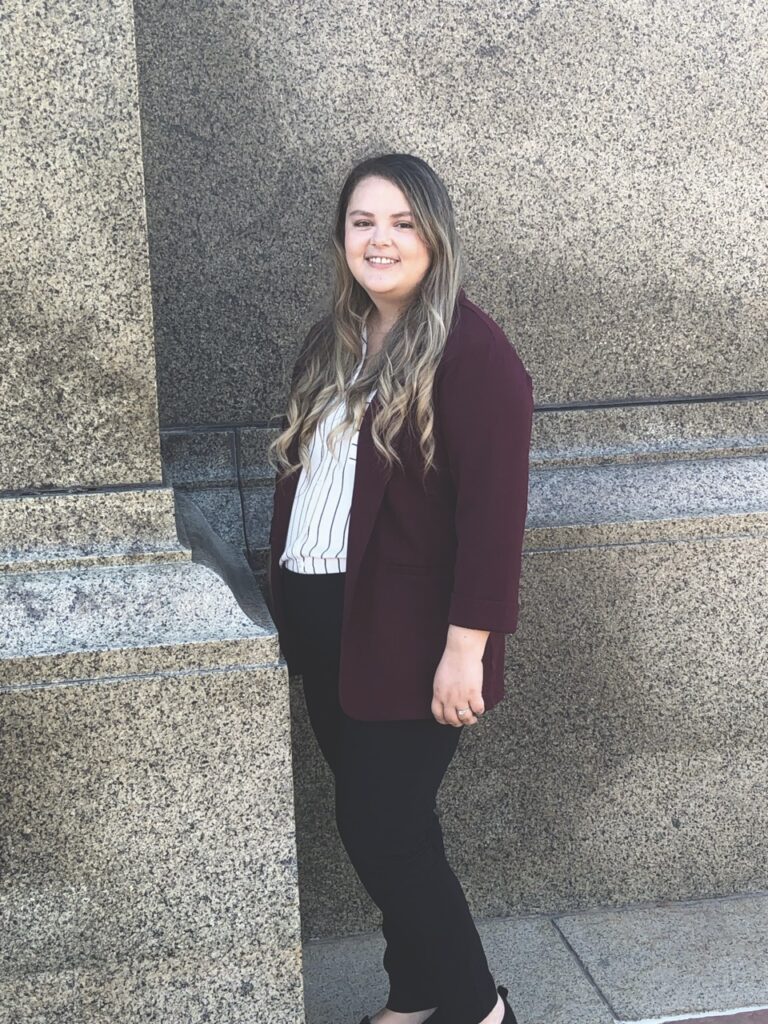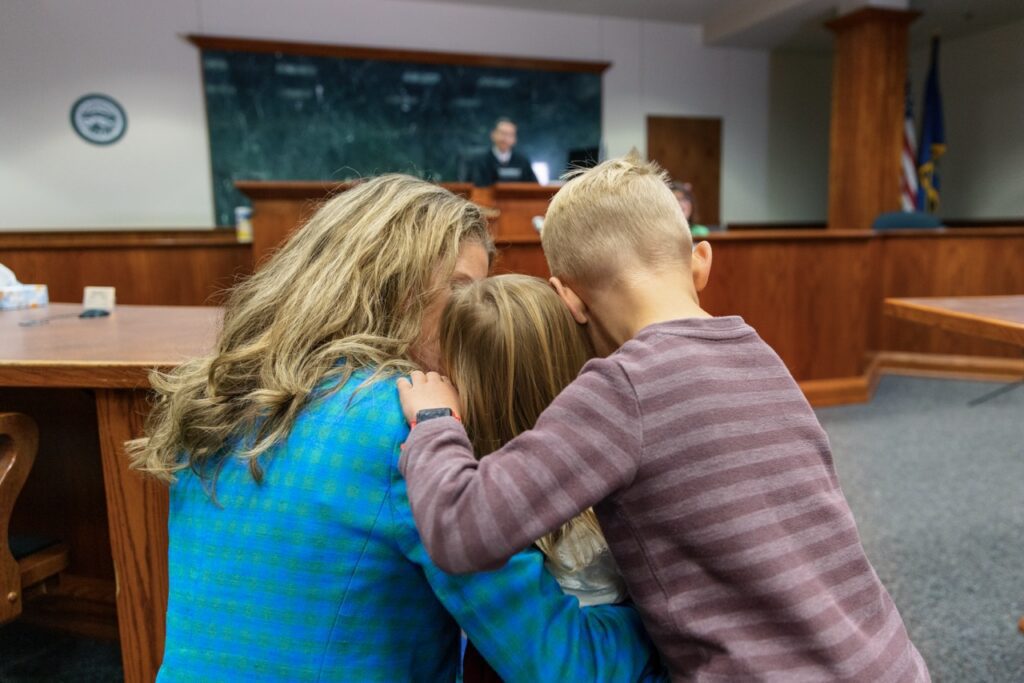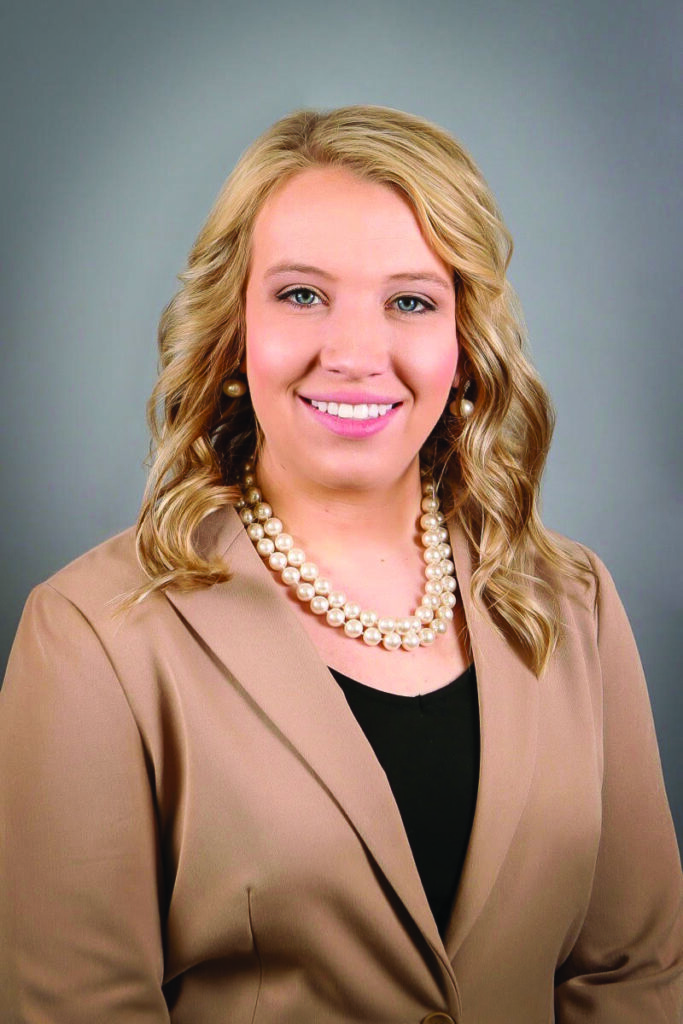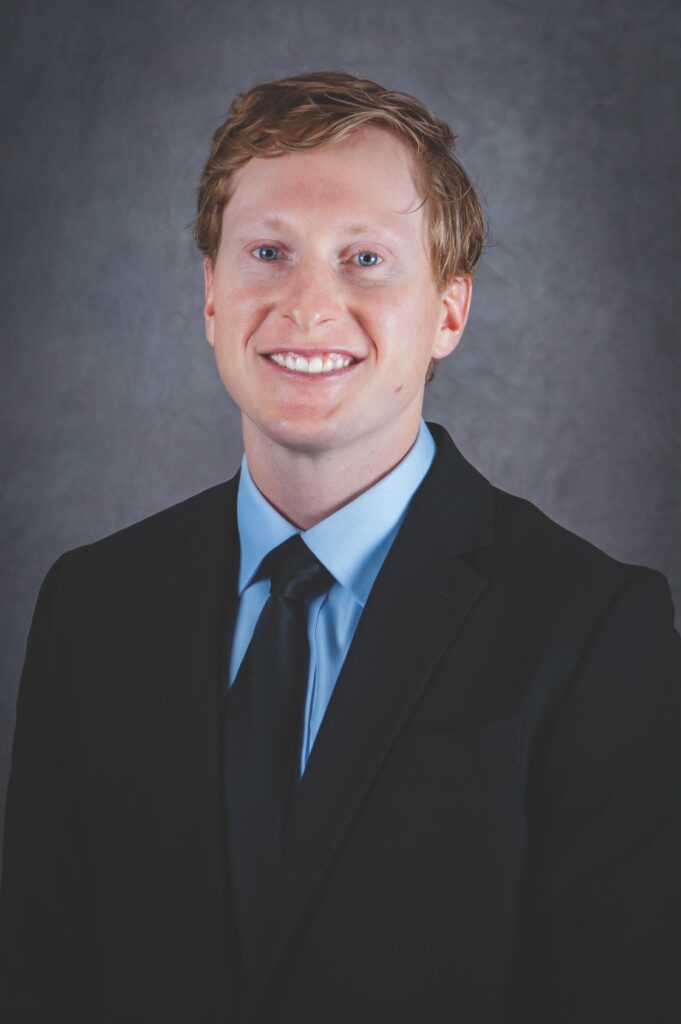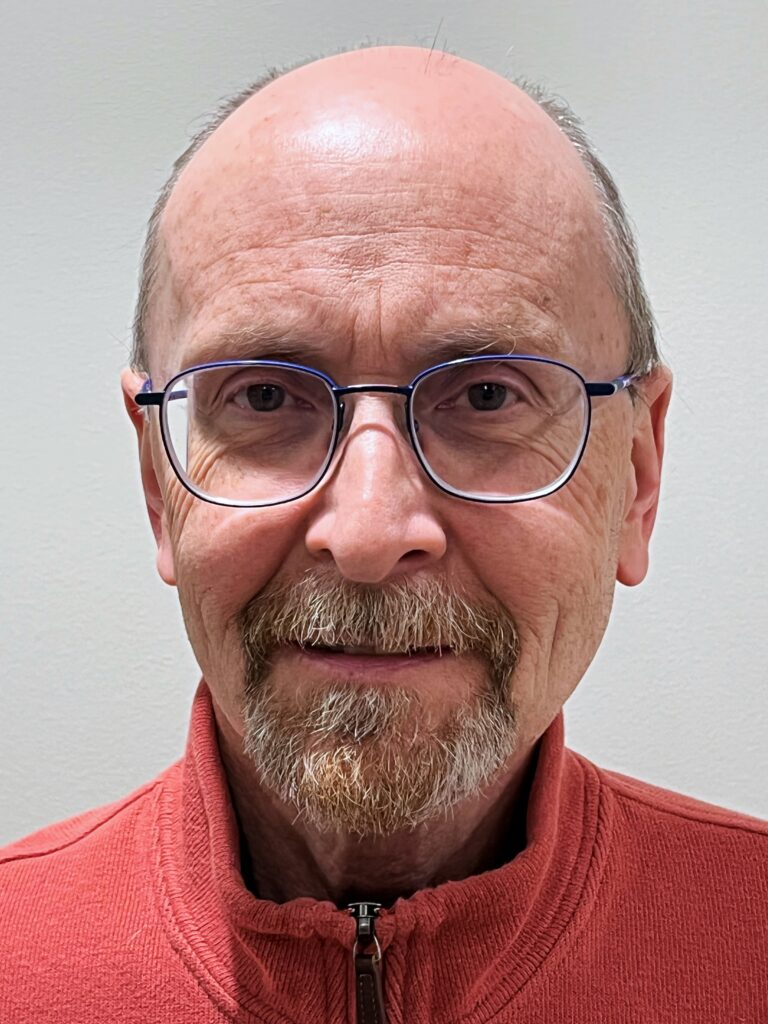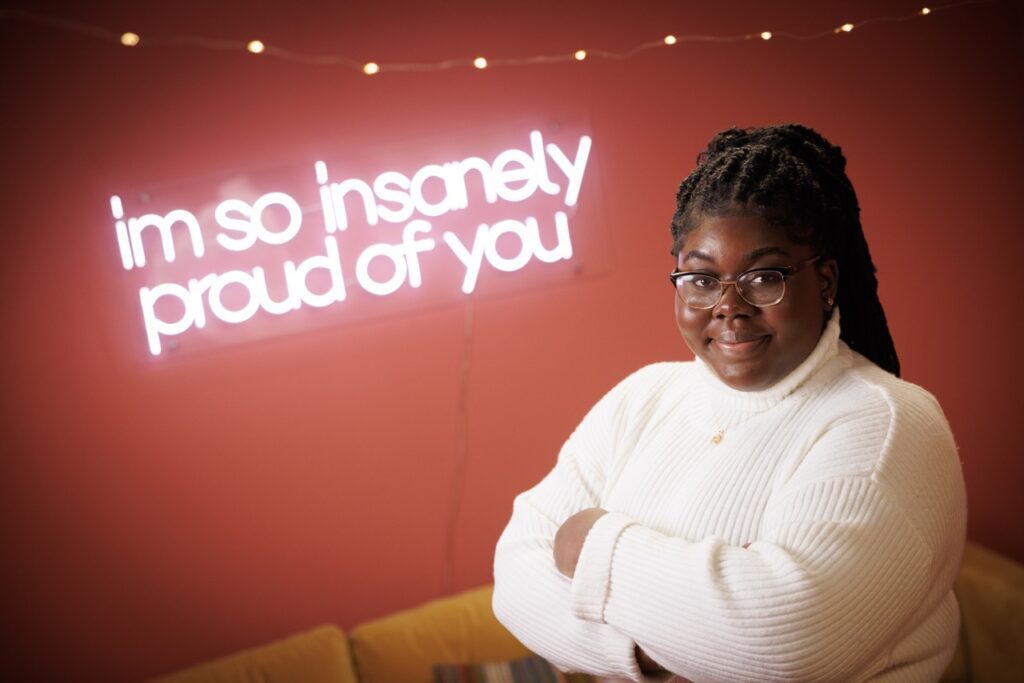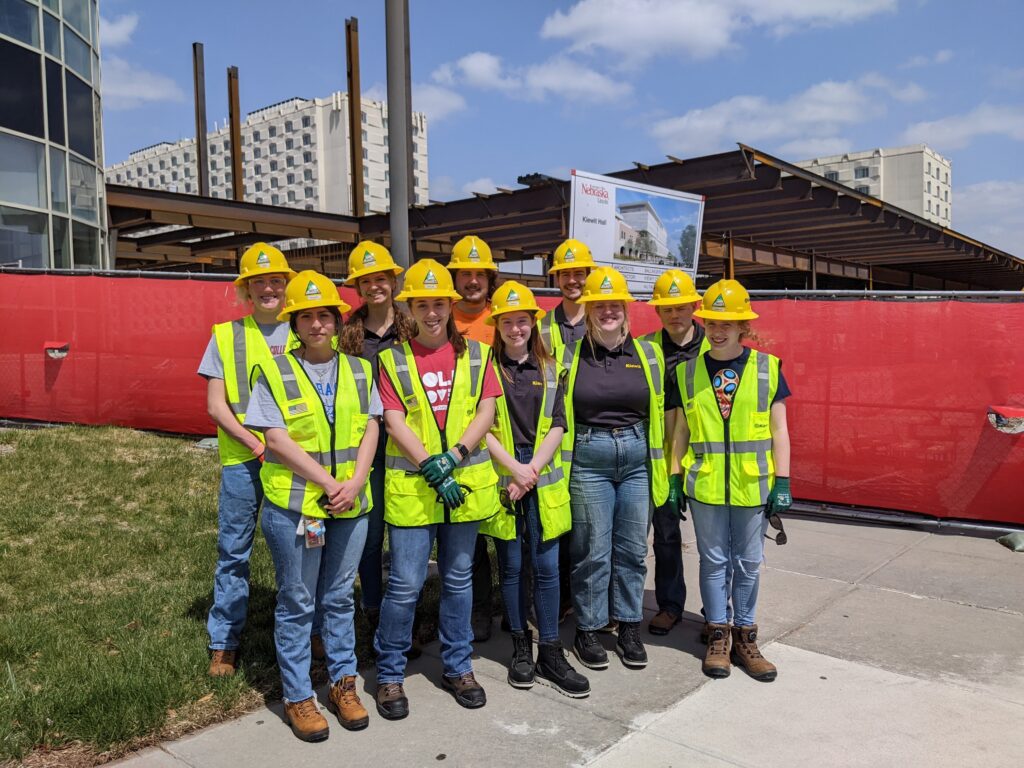By Susan Houston Klaus
UNK Cyber Systems Program Helps Students Gain Experience
As a kid, Trey Svatos spent his fair share of time playing video games. But more than reaching the next level of his favorite games, he was intrigued about the technology that lay beyond the controller and console. The Neligh, Nebraska, native had heard people say it was about ones and zeros and switches, and he wanted to know more. So, he dug in. He learned how games were built. He read articles about the latest innovations. He wrote papers in high school on how technology was evolving.
“I had a friend that kind of taught me the very basics of coding, and I found it pretty intriguing,” Svatos said. “It was kind of like a puzzle. It was a lot of problem-solving and trying to think outside the box with the tools you have.”
When it came time to choose a major at the University of Nebraska at Kearney, Svatos decided on computer science.
“I’ve loved it ever since,” he said.
The UNK Department of Cyber Systems offers a wide range of majors for students like Svatos who are interested in a tech career, including cybersecurity operations, computer science, information technology and business intelligence. Each major focuses on providing the fundamentals and then building on those skills by helping students gain knowledge of the latest advancements.
Job opportunities for cyber systems students continue to grow exponentially, said Associate Professor Angela Hollman, Ph.D. “For example,” she said, “the job market for cybersecurity openings is at 5,000 in the state of Nebraska alone. And many of these jobs are not in the eastern urban areas in Nebraska, but in our own hometowns.”
In an industry known for its blink-and-you’ll-miss-it evolution, UNK faculty stay up to date on what’s happening in the field by seeking recertifications and participating in externships, and by nurturing relationships with the business community, said Hollman.
“We’re really closely connected to local companies. We bring them into the classroom regularly so students can hear directly from them what’s changing or what’s the new thing that’s going on.”
Class sizes are smaller at UNK than at larger schools, Hollman added, which helps students from rural communities in particular feel more connected in the classroom. Those connections along with donor support from the Only in Nebraska campaign will help students succeed in cyber technology and become leaders in their fields.
“Scholarships are an important part of helping attract students into the cyber majors,” Hollman said. “Continued investment will help us provide our students with current technology equipment in the mini data center in Discovery Hall. It can also help to fund competition travel for the cyber student group, which remains an important extracurricular activity that helps connect students to other peers and recruiters in the field.”
Svatos, a junior who’s also in the UNK Honors Program, said having access to faculty like Hollman helped him get his footing early on.
“That helped quite a bit my freshman year,” he said. “I’ve gone in when I’ve had questions, whether it be about cyber systems itself or who I can ask to go to for advice for a coding language or if I just have general questions about how things function around UNK.”
I want to be around the area to give back to the communities that raised me, that helped me out.
Trey Svatos
Support through scholarships also has helped ease financial concerns for Svatos and allowed him to concentrate on his coursework. He has received a Board of Regents Scholarship, Honors Program Room Waiver, Jean Sullivan Rawson and Richard Rawson Scholarship, and B. M. Stevenson Family Endowment Scholarship. Without this financial support, Svatos said he wouldn’t have been able to focus nearly as much on his studies as he can now.
“Really, a large portion of my success in and understanding of my studies is due to all that support,” he said.
Pairing his major with minors in mathematics and psychology, Svatos looks forward to seeing where a career in software coding or application development can take him.
Initially, he said he was unsure about how much he could help people by working in software.
“I like kind of making life a little bit easier for people, taking stress and weight off their shoulders,” Svatos said. “But just by making a simple time-off application or learning the ins and outs of how web development can help people, I’m more invested in making sure I contribute to Nebraska and to all companies around it.”
After graduation, Svatos plans to stay in Nebraska. His experiences through the cyber systems department have opened his eyes to the need for people who are well versed in computer science and tech in general.
“I want to be around the area to give back to the communities that raised me, that helped me out,” he said.

